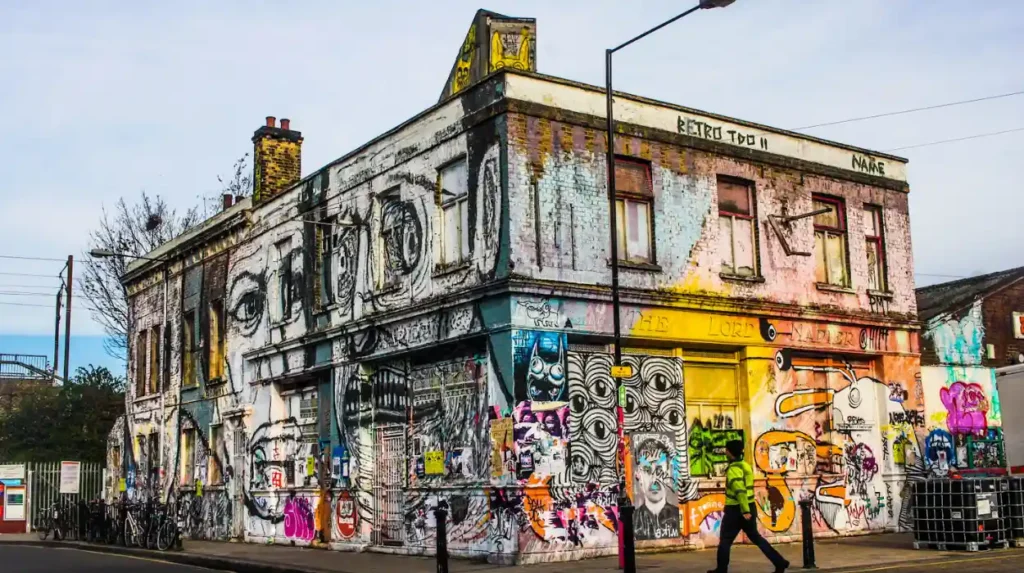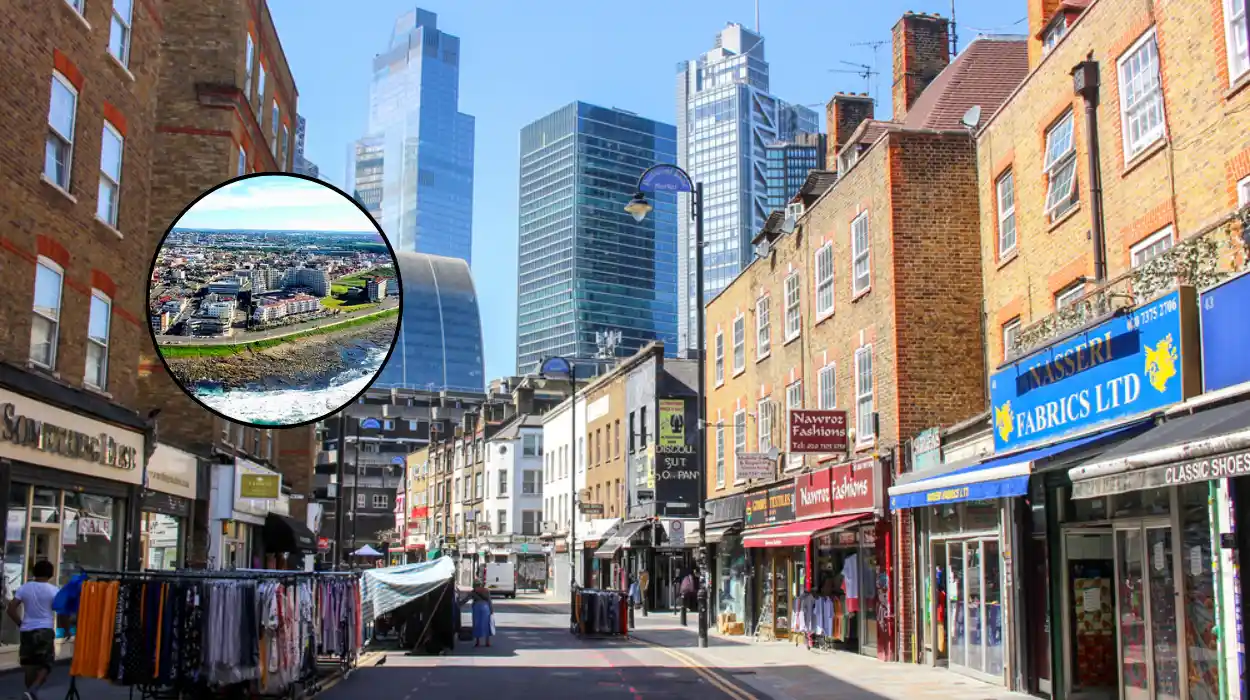East London is famous for its rich history as a maritime and industrial hub, its vibrant cultural diversity shaped by waves of immigrants and refugees, and its significant role in London’s social and political development. It is also renowned for its working-class roots, iconic landmarks linked to the docklands and the River Thames, and its contribution to arts, music, and urban regeneration.
Historical Significance of East London
East London’s roots trace back to medieval times when it began growing beyond the City of London walls, especially along Roman roads leading from Bishopsgate and Aldgate. By the 17th century, areas like Stepney formed part of a former manor held by the Bishops of London. The development was initially slow due to marshy land but picked up with the rise of maritime trades and shipbuilding along the Thames. The expansion of the railways in the 19th century further stimulated population growth and industrial development in boroughs like West Ham and Bow.
The East End, considered the historic core of East London, had a distinct identity, having been an administrative area known as the Tower Hamlets which owed military service to the Constable of the Tower of London. This gave it a prominent civic and military role in London’s history. Industrial growth brought weaving factories, docks, and manufacturing, turning the area into the primary industrial center of London.

Immigrant and Refugee Influx
East London is famously a gateway for immigrants and refugees over centuries. In the 17th century, it hosted many Huguenot refugees from France, primarily skilled weavers who settled in Spitalfields. By the late 19th century, the area’s immigrant profile transformed with the arrival of Eastern European Jews escaping persecution, some of whom became radical political activists.
The area has a strong legacy as the first British home for waves of migrants, including Irish, Jewish, Bangladeshi, Somali, and more recently Eastern European communities. This diversity shaped East London’s distinct multicultural identity and contributed to its vibrant street markets, cultural festivals, and cuisine.

Notoriety and Social Challenges
Historically, East London developed a reputation for extreme poverty and social hardship, especially during Victorian industrialisation. Overcrowded slums, unsanitary conditions, and crime defined the working-class East End. It also gained infamy as the haunts of Jack the Ripper, whose brutal murders in the late 19th century left a lasting dark legacy.
However, the area was also a stronghold for working-class political activism, with Bow as a hub for the Suffragette movement and the birth of significant Labour politics. Activists and philanthropists sought to improve housing and workers’ rights, helping shape the social reforms of modern Britain.
Economic and Urban Transformation
East London was historically dominated by the docks and associated maritime trade. The Royal Victoria Dock, opened in 1855, symbolised this industrial prosperity. However, after WWII, the area experienced economic decline due to dock closures and manufacturing shutdowns.
Since the late 20th century, East London has undergone extensive regeneration, with areas like Canary Wharf becoming financial centers, transforming former industrial sites into residential and commercial hubs. This regeneration has revived East London’s economy and reshaped its skyline while preserving its historic legacy.
Cultural and Artistic Identity
East London’s rich cultural tapestry also flourished through its artistic scenes. The area is known for street art, markets like Brick Lane known for Bengali cuisine and arts, and a music scene that contributed to grime and punk culture. It is a place where tradition and contemporary creativity coexist, continuing to attract young creatives and entrepreneurs.

Landmarks and Attractions
East London hosts numerous historic and cultural landmarks, including:
- The Tower of London (gateway to the East End and historic military site)
- Spitalfields Market (historic market area)
- Shadwell Basin and the Docklands (legacy of maritime trade)
- Sutton House, a Tudor brick house and London’s oldest surviving domestic building
These landmarks draw visitors interested in both history and vibrant urban culture.
East London remains a perennial topic of interest for those wanting to understand London’s history, culture, and urban development. Keywords such as “East London history,” “East End culture,” “East London regeneration,” and “famous landmarks East London” are ideal to target for lasting search relevance and attracting an audience keen on this dynamic part of London.
East London’s fame is multifaceted, encompassing its industrial past as London’s docklands, its role as a magnet for waves of migrants shaping its diverse culture, its social challenges and activism, and its ongoing urban renaissance. This rich tapestry makes East London a unique and inspiring part of the UK capital.
